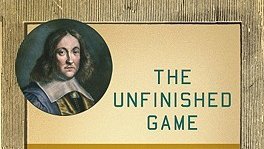
Swedish math enthusiast, author and educator. Dedicated to sharing the magic of mathematics. Matematikentusiast, lärare, läromedelsförfattare och redaktör.
How to get URL link on X (Twitter) App


 1. Throughout the book, Cummings shows several ways of thinking about the same thing. This is tremendously helpful.
1. Throughout the book, Cummings shows several ways of thinking about the same thing. This is tremendously helpful.
 1. Worked examples are completed solutions that we ask students to learn from. They are preferably used in the beginning of the learning cycle.
1. Worked examples are completed solutions that we ask students to learn from. They are preferably used in the beginning of the learning cycle.

 and Fermat in 1654. In the letters they try to solve a tricky gambling problem called “The problem of points”.
and Fermat in 1654. In the letters they try to solve a tricky gambling problem called “The problem of points”.
 2. To describe the position of planets and stars on the celestial sphere, one needs a coordinate system. There are (at least) three different ones, using in turn the celestial equator, the suns trajectory (the ecliptic) or the horizon, as its base. -->
2. To describe the position of planets and stars on the celestial sphere, one needs a coordinate system. There are (at least) three different ones, using in turn the celestial equator, the suns trajectory (the ecliptic) or the horizon, as its base. -->

 2. From the beginning mathematics was rhetorical. Even the numbers themselves were often written as words. With time, common mathematical words were abbreviated, by omitting letters, thereby becoming a sort of symbols. For instance, p instead of plus and m instead of minus.
2. From the beginning mathematics was rhetorical. Even the numbers themselves were often written as words. With time, common mathematical words were abbreviated, by omitting letters, thereby becoming a sort of symbols. For instance, p instead of plus and m instead of minus.